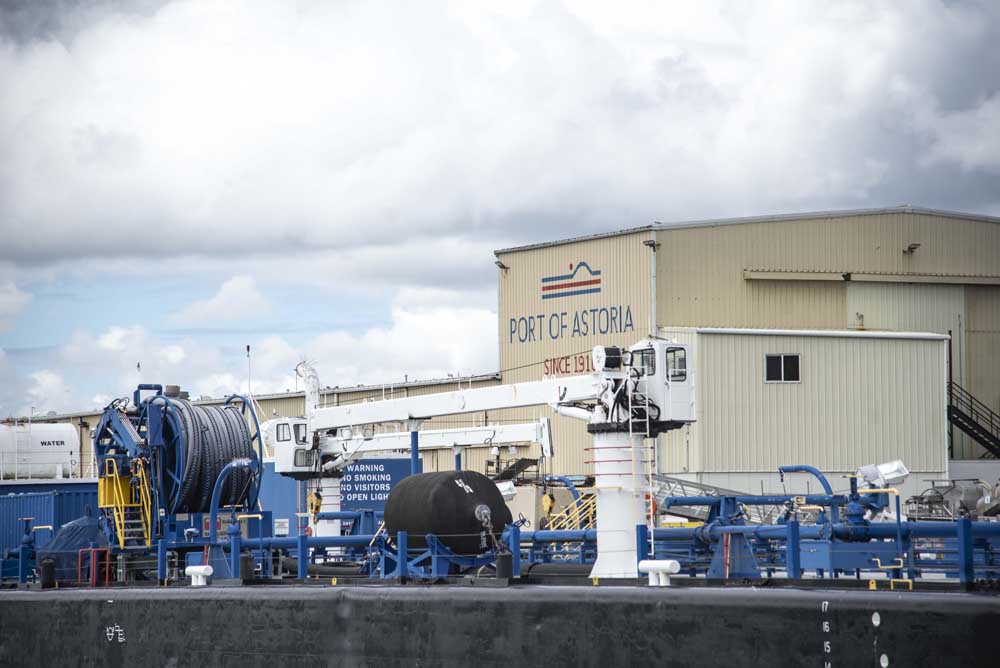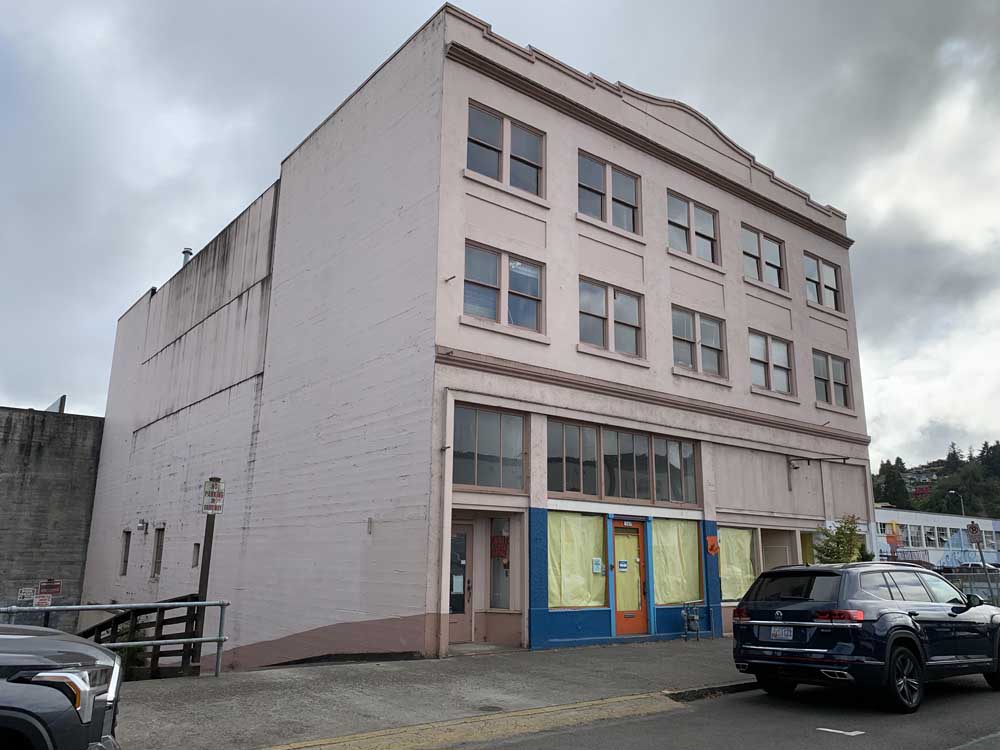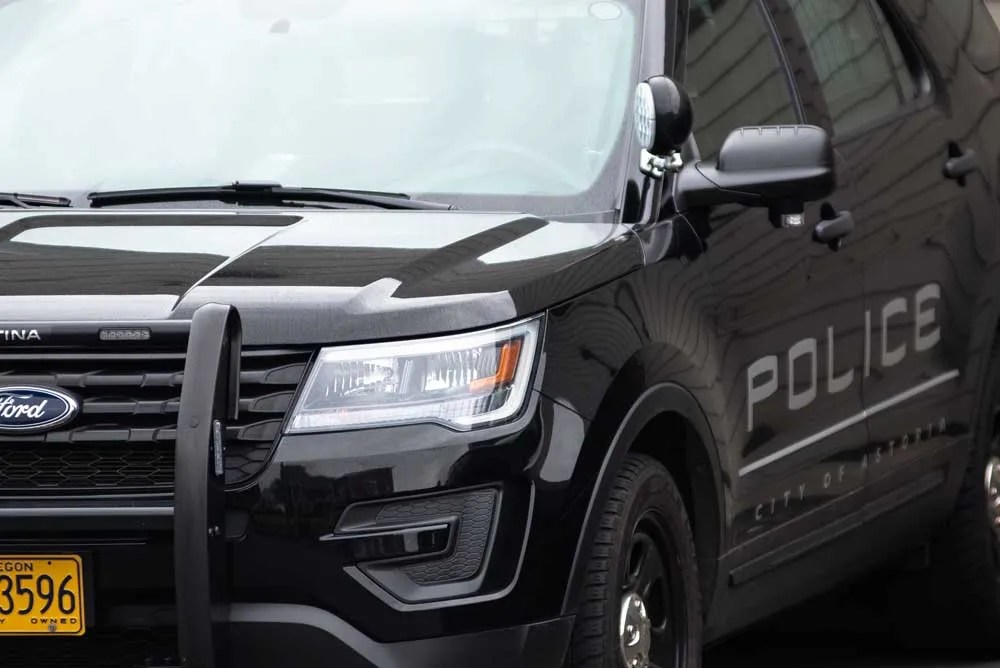‘The governor’s putting me out of business’
Published 4:00 pm Wednesday, December 18, 2013
Commercial gillnetters and local community members remain upset and concerned about a transition plan that will move gillnets off the main stem of the Columbia River by 2017.
A string of questions about implementing the plan were directed at Oregon and Washington fish and wildlife department staff at Wednesdays annual Salmon for All meeting in Astoria.
Among the staff were Roy Elicker, director of Oregon Department of Fish and Wildlife, and Guy Norman, regional director for Washingtons fish and wildlife department.
Many of the more than 50 in attendance voiced skepticism at the suggested economic viability of the plan and the proclaimed motive of conservation.
Fish and wildlife officials stressed that the plan is adaptive and will require information to be gathered during the transition process.
Gillnet fishermen, fish processors, buyers and businesses connected with the industry make up the membership of Salmon for All. The meeting began with a review of litigation efforts challenging the policy and a call to keep donating money to the legal fund without giving up hope. The policy is being reviewed in the Oregon Court of Appeals.
Changes to commercial gillnetting on the lower Columbia were spurred by Oregon Gov. John Kitzhaber in August 2012. A proposal was sent to the Oregon Department of Fish and Wildlife Commission. After several work sessions in the fall of 2012, a plan was developed to restrict gillnets to select areas while enhancing hatchery sites and testing seine nets in the lower river.
Oregon and Washington fish and wildlife commissions adopted the policy, but it was delayed by litigation challenging its merits. The legal challenge in Washington was denied, but Oregons version of the policy remains in the hands of the Court of Appeals. An initial delay on implementing the rules was removed by the court in October.
Important
Astoria Mayor Willis Van Dusen, Warrenton Mayor Mark Kujala and Skip Hauke with the Astoria-Warrenton Area Chamber of Commerce were invited to the Wednesday meeting to give the fish and wildlife staff an idea of the economic importance the commercial gillnet fleet has on the area. Each expressed how vital commercial fishing remains to the local economy.
Hauke spoke of not only the economic impact, but also the historical legacy that he said was at stake.
Its an amazing part of our history, he said. Its one of the reasons people come to visit us because of the character of our town and we have a working waterfront; and they can see fishing boats. Its one of the reasons why were on the map and were a destination.
Elicker started a question and answer period by saying that the governors plan was meant to actually keep commercial fishermen from being cast aside completely from lower Columbia River fisheries.
Measure 81, which was on the November 2012 ballot, would have banned gillnets outright on the river. The measure was defeated by a 66 percent majority.
Dispute over economics
The actions that were taken were done to protect the economic viability of this community, said Elicker. Thats what this is about.
Elicker said the plan is meant to maintain the economic and cultural viability of the community.
We recognize and certainly understand the importance of the commercial industry to the lower Columbia counties, said Norman of WDFW.
Norman said he respected the historical presence of the commercial industry and that the priority is to make sure there is a future.
In response to Kitzhabers intent to protect the commercial fishermen, Van Dusen said the governor was wrong.
If hes trying to save us from a vote of the people, bring the vote on, the mayor said. Well stand up and well get our word out to the voters. We already did it several times. If the governor is thinking, Im helping your area by keeping it away from a vote of the people, I vehemently disagree with that philosophy and I really disagree that its helping our economy.
What on earth makes you think youre helping our economy by taking away our fishing on the river? said Georgia Marincovich, whose husband, Jack, is executive secretary of the Columbia River Fishermens Protective Union.
An annual review will be made each year by both state fish and wildlife commissions as the transition period moves forward. Norman said the purpose of the review is to assess whether the objectives have been met and economic sustainability kept for commercial gillnetters.
Theres going to be some impacts as we transition through this, said Elicker, in response to worries about economic harm. He said he was hopeful that it would work out on the other end of the transition period.
A big component of the transition is implementing alternative gear such as seine nets. Recreational and commercial advisory groups met with fish and wildlife staff this month to begin to discuss what a pilot seine fishery would look like on the lower river. On Wednesday, after the Salmon for All meeting, an informal gathering of staff and advisers talked about it as well.
Seine fishery costs
Its unclear what the harvest rate would be, where in the river the pilot program would take place, or how it will be decided who from the commercial fleet gets to take part in it.
Fishing with seine nets has been rebuffed by gillnetters since the development process. They say it is not economically viable and that was reiterated Wednesday.
There was concern at the meeting that the large mesh size gillnet fishing that was done upriver of St. Helens would be downsized for implementation of seine nets. More than 1 million adult fall chinook salmon returned this year.
Mike Wullger, a commercial fishermen and board member of Salmon for All, worried about that opportunity going away.
Youre taking a successful fishery away for a seine fishery, Wullger said.
Gillnetters who want to try the pilot fishery for seine nets would also have to use a bigger boat and a crew, a costly endeavor not seen as being profitable in the long run.
I dont own a seine boat or a seine … the governors putting me out of business, said Wullger.
Mortality studied
Besides worrying about economics of the seine nets, there were also plenty of opinions about the idea that seine nets could be useful in conservation of Endangered Species Act (ESA) listed salmon and steelhead species.
Norman said the idea is to allow the commercial fishery to have more opportunity with catching hatchery chinook salmon while reducing interaction with wild fish in spawning grounds, a conservation objective.
But the mortality rate for listed species is still being worked on for seine nets. Washington has been doing tests with the net and recently radio tagged fish to see where they would go after being released and choosing not to head further upriver. The final year of the study is this year and should be wrapping up with data available in March. State fish and wildlife departments will have to submit the mortality rate to NOAA fisheries for the fall season.
Its in the works to have that ready for 2014 implementation, said Norman. Were still going through the process.
Wullger pointed out that with large gillnet mesh size used in the upriver areas of Zones 4 and 5 this year, steelhead were able to pass through and he said gillnetters used only one-third of the impacts for ESA-listed fish.
Youre going to catch everything in that river, Wullger said about using seine nets.
Jim Wells, a commercial fishermen and president of Salmon for All, said he worried about the allowable impacts for steelhead being used up by the pilot test fishery and precluding the use of gillnets there.
Both Oregon and Washington expect the primary access to the upriver fall chinook salmon in Zones 4 and 5, above St. Helens, to still be done with large mesh gillnets by the fleet in 2014. It would coincide with introduction of the seine fishery, Norman said.
Jon Englund spoke of the effect the transition is already having on his business, Englund Marine & Industrial Supply, as well as other local businesses.
People are being hurt today, tomorrow and the next day, said Englund, about gillnet fishermen and the businesses that are tied to the industry.





